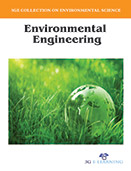Earth and Environmental Science

Over the period of the twentieth century, growing attention of the environmental and public health impacts linked with anthropogenic activities has encouraged the development and application of methods and technologies to decrease the effects of pollution. Pollution has always been a trans-boundary environmental issue and a subject of global anxiety for past many years. High concentrations of contaminants due to numerous anthropogenic activities influence the environment. Pollution prevention refers to the use of materials, processes, and practices that reduce or eliminate the creation of pollutants at the source of generation through increased efficiency in the use of raw materials, energy, water, or other resources or through the protection of natural resources by conservation. Pollution prevention is a multimedia approach that reduces waste generation and the emission of pollutants released to land, air, and water without transferring pollutants from one medium to another.
This book provides an introductory approach that focuses on the basics of this growing field, including the important aspects of water, air and noise pollution.
Environmental Engineering protects the conditions of a safe environment, its role being crucial in eliminating ecological threats. The area of air quality monitoring, modelling, exposure, health and control, and can be of great help to graduate students professionals and researchers. The book deals with various monitoring techniques of air pollutants, their predictions and control. The level of surface water quality protection is variable around the world in large part due to the relative effectiveness of environmental regulation and the degree to which science influences the regulatory process. This book also provides a rational framework for estimating the assimilative capacity of the receiving water body for certain contaminants and applying factors of safety and incorporating acceptable levels of water quality criteria violation in the decision making process. The adverse impacts from excess noise on human health and daily activities have accelerated at an alarming rate over the last few decades. This has prompted significant attention into noise attenuation and mitigation of these unwanted effects. The book provides the most up-to-date information on in the field of noise pollution and its control.
Besides students, the book will be useful to the academia of environmental sciences, civil/environmental engineering as well as to environmentalists and administrators working in the field of pollution control.